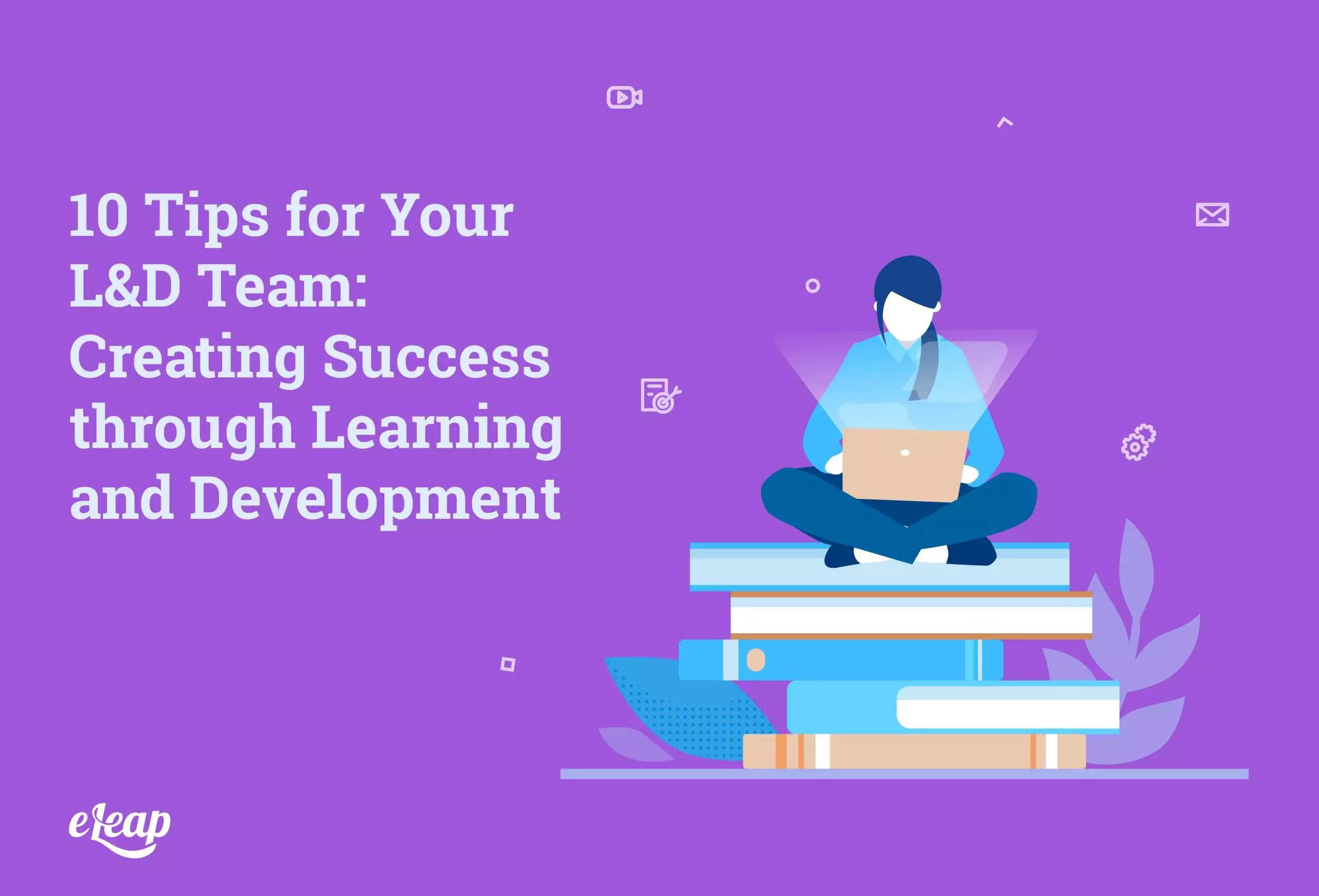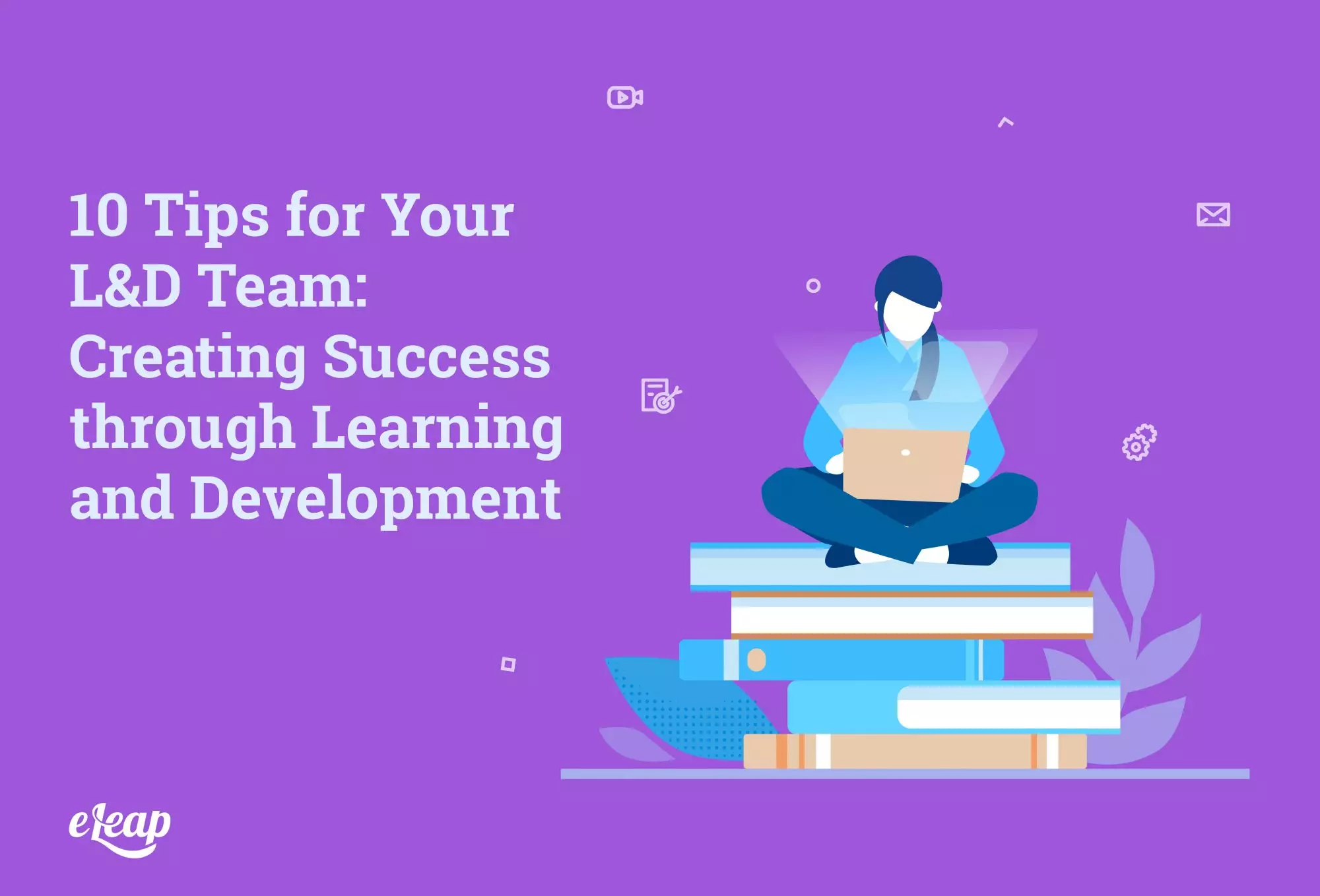10 Tips for Your L&D Team: Creating Success through Learning and Development

Are your L&D efforts lagging? Not seeing the traction that you need? It’s not uncommon, particularly today, in this world of remote working as the new normal. Between employees being overwhelmed by working from home to employers scaling back on critical efforts, it can be easy to see your success decline.
Thankfully, there are ways that you can change the paradigm. L&D doesn’t have to come in last, and with the tips we’ll cover in this post, you can accelerate your results even in a predominantly remote-working world.

1. Personalize It
Let’s face it. One-size-fits-all learning actually fits no one. It’s a copout. It’s the attitude of “good enough”. If you want to achieve success, you have to get rid of the idea that everyone learns the same way or values the same content. Your learners should be able to access the content they need when and how they want it. That also means they should have access to different learning styles, such as video-based content, games, text-based content, interactive content, and more.
2. Make It Mobile
This tip follows directly from the last one. Make your L&D content mobile accessible. The days when you could expect learners to come to HR and sit at a workstation for an hour are long gone. People are too busy now. The content is too advanced. You need to ensure that your learners can log into the system from their laptops, from their tablets, and even from their smartphones. This enables them to learn when and where it works best for them, whether that’s in the office or on the bus heading home.
3. Multiple Sources
Multi-source learning is nothing more than the ability to pull information about a particular topic from a range of different sources. In the past, you probably expected your learners to get all the information they needed from your L&D content, but today that’s not realistic. Create an L&D ecosystem that allows learners to go in search of information and to gather it from multiple sources. Think user forums and message boards, social media, video content, and even mentorship programs.
4. Focus on Learning, Not Testing
Take a cue from the downfall of the American education system. Educating with a focus on testing is the short road to failure. Students who learn only to pass a test focus on memorizing information that they soon forget. Instead, focus on actual learning – inculcating information and building skills that will last a lifetime. The real test isn’t the multiple-choice exam at the end of a module. It’s the ability to put a new skill to use in the real world and keep on doing that.
5. Develop Knowledge and Skills Collaboratively
Collaborative learning can be a powerful way to help build knowledge and skills. You have access to several collaborative learning models, as well. This goes well beyond the interactivity found in models like webinars, and touches on virtual workshops, digital mentorship programs, discussion forums, and even wikis can help your team come together in new ways, build knowledge collaboratively, and push the organization toward success.
6. Gamify Your Content
Unless you’ve been living under the proverbial rock, you’ve at least heard of gamification and its impact on the eLearning industry. However, chances are just as good that you’re not entirely sure what it’s all about. Is it just taking course content and making a video game out of it? Not even remotely.
Gamification is a vast area, and it can range from transforming content into games to simply adding game-like elements, such as leaderboards and high scores, that encourage a sense of competition among your learners. It’s all about inciting them to take action and then keeping them engaged and moving forward.
7. Bring in Real-World Learning
Once, real-world training was the norm. It was delivered through apprenticeships and internships. Today, that’s not usually possible, but new technologies are enabling experiential learning in exciting new ways. Think AR and VR and how they can help learners master skills in situations that mimic real-life in great detail.
8. Consider Curated Content
Creating killer learning and development content can be incredibly challenging, not to mention costly. The good news is that there’s a wealth of material out there that you can curate and provide to your learners. What’s more, you can do this in innovative ways. Rather than putting everything into your LMS, consider sending some content via email, other content via your company intranet, shared articles in learning forums, and more.
9. Create a Learning Mindset
Sometimes called “invisible learning”, a learning mindset allows your learners to identify key lessons in real-life experiences all around them every day. They’re open to and focused on learning all the time. It’s not something they do for an hour a week in HR. It’s part and parcel of who they are. The good news is that anyone can develop this mindset, and having it built into your company culture can make that easier.
10. Micro-Lessons Work Great
One holdback to learning has always been the time investment required. Learning sessions might last an hour, or even two. That was particularly true during the onboarding process, but even experienced team members might have to sit for an hour or more at times to complete the necessary lessons. The prospect of not just sitting in front of a computer for that length of time, but the hit that it delivers to productivity and personal time is daunting. You can help get around that by using micro-lessons – smaller chunks of learning delivered more frequently. Shorter lessons also have the benefit of being more memorable, boosting overall information retention, too.
Get Ready for L&D Success
With the tips we’ve discussed here, you should be able to transform your L&D initiative and go from humdrum to wow in a very short time. Take the time to get key stakeholders on board, explore your options, and then design courses and content that support success.